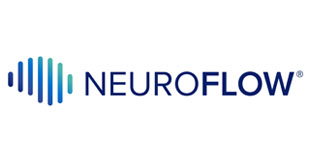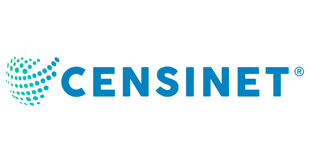Xealth’s CEO and Cofounder Mike McSherry explain how healthcare systems can leverage the right data with the right digital health tools.
There’s no doubt the swell that is big data has been building for some time. However, the question of how useful and all that data will continue to plague healthcare providers. The overwhelm of information is real, but so is the potential for providers to make actionable use of it, according to tech innovators.
With doctors now prescribing more than medications — adding fitness trackers, meal delivery services, transportation, patient education, and home monitoring devices to treatment plans—technology has the potential to make patient-centered care a reality. However, we are currently in the Wild West of this field, where the promise is high, and standards are few.
Digital health tools can be exciting at first, but then often become yet “another initiative” added to the mix, with low utilization and engagement. With so many tools, the options can be overwhelming, and one-to-one connections are not the answer. So, how can a health system avoid devoting time and attention to a new tool with minimal benefit, especially when the return on investment is untested?
We sat down with CEO and Cofounder Mike McSherry to ask that very question and to learn more about how his company, Xealth, has taken on that task by building its platform to help providers make the most of the data available to them.
Let’s start by talking about the digital health wave or “avalanche.” Today, digital media remains disparate from healthcare (app data from wearables, etc.). However, you’re saying that there is a way to leverage that data into healthcare to aid in better outcomes. Then, what do you say to medical providers who might be feeling a bit overwhelmed by the information they have to handle already? Can the right tool alleviate the data wave as it approaches?
A: Providers are flooded with incoming data already, so, understandably, the idea of even more data points is a challenge. The problem currently is that much of this is coming from one-off or siloed apps and systems, creating a workflow challenge. No one wants to look around different places to compare different points. We need to have the information intelligently flow into the provider workflow so they can see everything they need to in the patient note and be able to act from there as well.
With that in mind, talk to me about how the emergence of Xealth was inspired? With so many data obstacles facing healthcare right now, how hard is it to build the right tool around data management and engagement?
A: As you noted, many new tools exist that can improve patient experiences and outcomes; however, the digital health ecosystem is extremely fragmented, including within the same hospital. It makes implementing digital health initiatives in a consistent way complicated and has implications for patient experience, along with data privacy and integration concerns.
When we started Xealth, we looked at how we could leverage tools that patients and providers are already using to scale digital health programs in a meaningful manner that also shows how well they are working.
One of the challenges health systems are up against is finding the right tech to accomplish the goals of patient-centered care. Tell me what you think providers need to look for when assessing any tech platform or tool to manage and engage patients better. What’re the criteria?
A: No matter how much promise technology has, if it creates more work for the people that use it, adoption will suffer. Keeping tools within the provider workflow, and reaching patients in a way that is most comfortable for them is crucial. It also needs to build on the physician-patient relationship to gain patient trust.
Talk to me about the Xealth platform: I understand it’s a pretty immersive tool. It’s particularly interesting how the platform tracks patient activity. Tell me how the device analyzes the data and how that leads to better decision making for healthcare providers?
A: The Xealth platform takes a variety of tools, including medical devices, biopharma, apps, DME, transportation, meal delivery services, etc., and organizes them in a way that feeds it into the EHR based on hospital and provider preferences. It looks at information already in the patient chart, the reason for the visit and other clarifying points compares that against the available tools and the patient’s insurance formulary, and then offers the most suitable options to the provider. The provider can then prescribe the tool or service as they would any other medication prescription. Information about the patient’s receipt and usage of that service feeds back into the EHR so providers can see how effective each program is and make modifications, if necessary.
How does a platform like this keep the patient engaged? Do the perks like meal delivery and transportation keep the patients connected better? Is the concept to be a one-stop-shop to keep engagement consistent?
A: The platform makes it easier for providers to get these programs and tools to the patient and then delivered in a way that makes it simple for patients to receive, many times this is via mobile. Instead of handing a patient a piece of paper with the names of apps, websites, or phone numbers to call to manage on their own, recommendations are automatically sent to their mobile device or email.
Being able to automate the schedule of transportation for patients that do not have reliable ways to make appointments or meal delivery to pregnant women or diabetic patients that are in unstable food situations, helps with outcomes. Knowing that this is coming from their physician improves engagement as people trust their doctor.
When you look at the big picture, what advancements in the functionality of platforms such as yours do you see emerging over the next few years; What kind of data do you think clinicians will optimize to deliver more customized care?
A: Data is going to continue coming in from more places; we are going to be better at streamlining and combining it with being better equipped to make decisions. Think about it, we collect customer information at every turn and put it to improving travel experiences and targeting online ads. Why not apply it towards making a real difference in our health? Data from wearables, daily habits, and preferences can be combined with clinical data to inform clinical decisions and better guide outcomes.
How does Xealth see itself in the future you described above? Do you have a primary focus on population health management or home services, or is the idea to make this kind of platform and care model more ubiquitous?
A: We are and will continue to be a trusted partner for our hospital customers. That means being able to supply them with best practices for incorporating digital health initiatives that will help them reach their goals. Our role is supporting our customers in the digital health programs that benefit their providers and patients and rolling them out in a meaningful and consistent manner.
The promise of these solutions is evident, but what about protecting the data it seeks to deliver and create? How are solution providers ensuring that they are providing a secure means of transmitting data? Is this becoming a more difficult task to accomplish as hackers grow savvier?
A: Many interfaces turn on a firehose of data because they cannot selectively take just the required points. One benefit of Xealth is that only the information needed to complete the “prescription” is shared with the app or service. A diabetes app requires different information than a site delivering crutches to their home after surgery. Only the data needed will be shared. Also, since all partners are plugged into the Xealth platform, it is simple to unplug them if they are no longer used. This approach is more secure and a lighter lift for internal IT resources.
We know that technology on its own can only do so much. What is your advice to healthcare systems who want to implement such platforms and received maximum ROI without sacrificing more time to another form of technology? Is there a set of best practices or data governance one should establish? How do healthcare providers ensure that they get the most out of investing in integrative platforms such as Xealth?
A: Healthcare organizations should look at what goals they want to achieve and select the partner that will help achieve them. Technology itself is not a goal – it enables and supports initiatives. Find technology that fits with your objectives and workflows to minimize the time impact on using the tool, and then create a playbook on how to manage the rollout, which includes policies about data governance.
What are you hoping our readers take away from this conversation regarding digital tools in healthcare right now?
A: Many tools and data sources are offering significant benefits to efficiency or outcomes. It is essential to manage them in a broader context, so they are strategically incorporated in a way that will drive the most value to the organization, providers, and patients.




